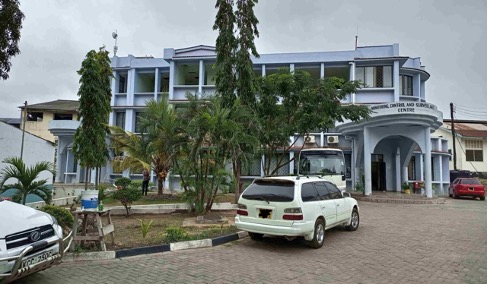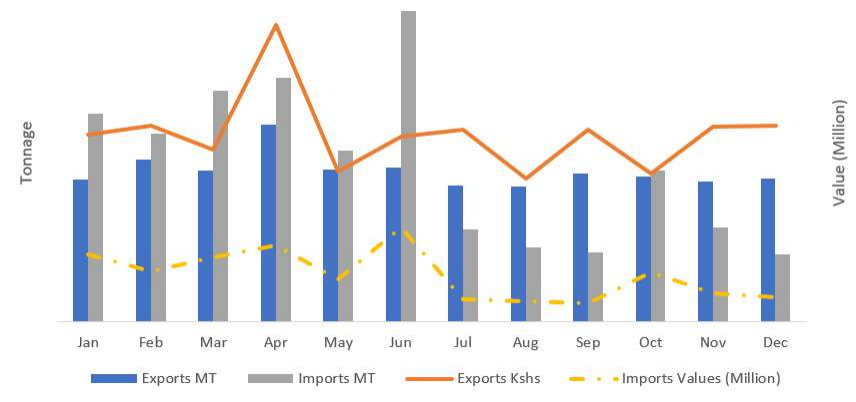
The fisheries sector continue to play a vital role for the blue transformation by being a vital source of food and nutrition security; helps reduce poverty by generating revenue, creating wealth and providing a safety net; creates employment; provision of fishery commodity for trade and development of Micro, Small and Medium Enterprises (MSMEs); provision of cultural diets; contribute to the sustainable economic development of coastal and riparian inland water communities .
It is also important to remember that as Aquaculture grows to satisfy the growing demand, there is need for more concerted efforts to ensure the Governance of the resources is collaborative and consultative for sustainable growth and development.
This is key considering that some of the fishery water resources are shared with multi-user interest which require proper planning to avoid conflicts and ecosystem degradation.
Kenya has continued to embrace value addition and post-harvest reduction within the industry by adopting modern processing techniques, ensuring sustainable practices and exploring innovative value-added products, the fish industry can cater to a growing global market, contribute to food security and create economic opportunities.
On a global scale the blue economy is worth $24 trillion, and it generates at least $2.5 trillion each year from the combination of fishing and aquaculture, shipping, tourism, and other activities.
Based on its strategically location, the country continues to reap from the Indian ocean and its inland water bodies like Lake Victoria, hence boosting its economy.

In 2023 Kenya’s total fish production was 161,308 metric tonnes valued at 35.9 billion Kenya shillings. Most of these production were from inland capture fisheries, amounting to 121,357MT with an ex-vessel value of Ksh. 26 billion. The fish production from marine and aquaculture was 39,950 and 31,767 MT worth Ksh. 9.9 and 10.0 billion shillings, respectively.
Inland capture fisheries contributed 67% of Kenya’s total fish production, with the principal catches coming from Lake Victoria. The lake accounted for 86,394 MT which was an 8% decrease in catch compared to 94,349 MT caught the previous year.
Marine artisanal production increased from 25,380 MT worth 5.4 billion in 2021 to 35,596 MT worth 8.7 billion in 2022. Deep water trawl catches increased from 1,026 MT to 1,267 MT while deep water crab catches decreased from 137 MT to 103 MT.
However, the shallow water trawling catches decreased to 128 MT from 330 MT while longline catches increased to 527 MT from 432.6 MT. The marine fisheries potential is estimated at 150,000 – 300,000 MT.
The aquaculture in Kenya recorded 31,767 MT valued at 10.0 billion as compared to 27,939 MT valued at 9.7 billion in 2022.
This increase can be attributed to expanding cage culture enterprises in Lake Victoria. On other hand the land-based aquaculture production continues to stagnate mainly due to low level of pond stocking and a considerable number of inactive ponds.
The practice has since spread to Lake Victoria's five riparian counties, namely Busia, Siaya, Kisumu, Homa Bay, and Migori.
Kenya continues to collaborate with key stakeholders in enhancing governance of the fisheries and blue economy.
This is aimed at ensuring durable use and development of the aquatic resources in a manner which is consistent with ecologically sustainable development and uplifting of the living standards of the fishing communities while promoting economic growth.
Key Areas of Collaboration on fisheries governance
The establishment of Beach Management Units (BMUs) Decision-making mechanism enhances the the planning and execution of the management strategies, conservation and protection of the fish critical habitats, fisheries data collection and management of the fish landing stations and the infrastructures therein.
The country has also set up an An inter-Agency Monitoring, Control and Surveillance (MCS) Unit has been established by the Fisheries Management and Development Act Cap 378 to address the illegal, Unreported and Unregulated (IUU) fishing and fisheries crimes.
These collaborations include:
Kenya Fisheries Service and United Nations Office on Drug and Crime: Kenya Fisheries Service (KeFS) is collaborating with the United Nations Office on Drug and Crime (UNODC) on strengthening Monitoring Control and Surveillance to address Illegal, Unreported, and Unregulated (IUU) fishing and fisheries crimes.
Kenya Fisheries Service and The Nature Conservancy (TNC) to improve marine fisheries governance.
Kenya Fisheries Service and Food and Agriculture organization (FAO) in development of Standard Operating Procedures (SOPs) for MCS and training of MCS personnel on Port State Measures (PSM).
Kenya has also partnered with global players in raising funding for fisheries sector. The World Bank announced its PROBLUE initiative at the 2019 Our Ocean Conference, which has so far raised roughly $100 million from donors like Canada, Denmark, France, Germany, Iceland, Norway, Portugal, Sweden and the European Union.
The PROBLUE is an Umbrella Multi-Donor Trust Fund (MDTF) administered by the World Bank, designed to help countries chart a course towards a Blue Economy approach.
In a bid to foster continental growth the country aims at increasing investment in the fisheries and blue economy sector for Blue Transformation for Shared Prosperity and Improved Livelihoods.











